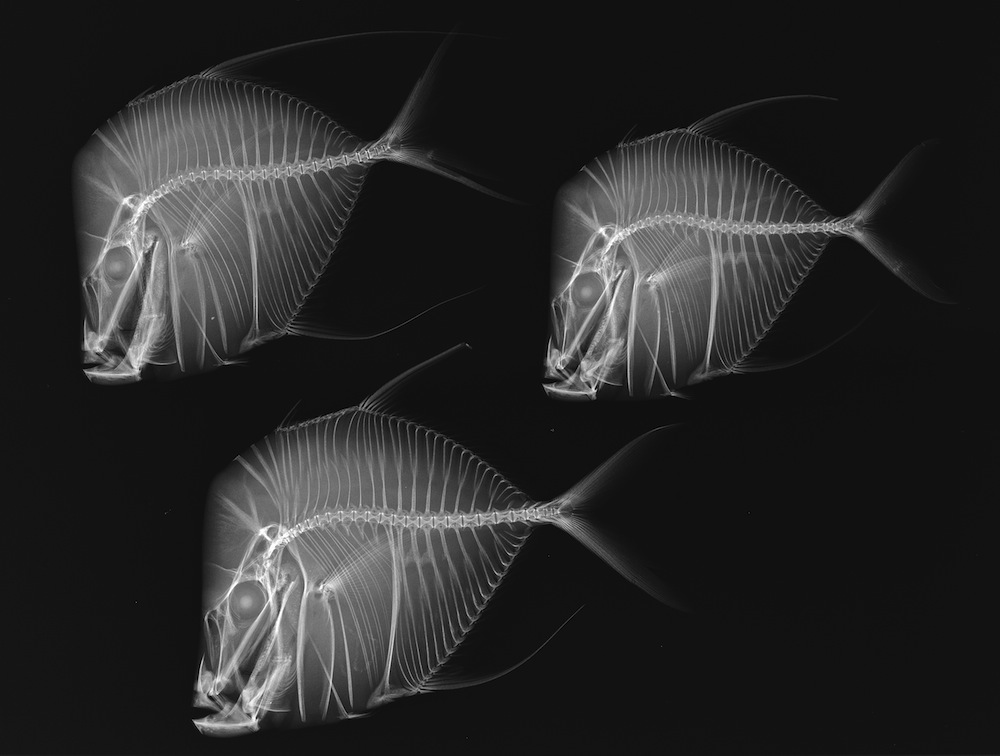Stunning X-rays Reveal Fish Insides

If you've always thought of fish bones as an annoying barrier to enjoying a salmon fillet, think again. An upcoming exhibit by the Smithsonian Institution reveals the diverse skeletal structures of marine animals from eels to seahorses in beautiful black-and-white.
The X-ray images, set to premiere at the Yale Peabody Museum of natural History in New Haven, Conn., on July 2, are part of the Smithsonian Institution's research on fish evolution. By peering inside the fish without cutting them open, scientists can study the animals' undisrupted skeletons. X-rays may also reveal other hidden details, including undigested food in a fish's stomach. [Slideshow: Fish in X-ray Vision]
The travelling exhibit features 40 dramatic X-rays, laid out from evolutionarily primitive jawless hagfish to complex, spiny-finned species like the striped bass. The exhibit will remain in New Haven until Jan. 8, 2012, when it will embark on a 10-city tour that will last until 2015.
You can follow LiveScience senior writer Stephanie Pappas on Twitter @sipappas. Follow LiveScience for the latest in science news and discoveries on Twitter @livescience and on Facebook.
Get the world’s most fascinating discoveries delivered straight to your inbox.

Stephanie Pappas is a contributing writer for Live Science, covering topics ranging from geoscience to archaeology to the human brain and behavior. She was previously a senior writer for Live Science but is now a freelancer based in Denver, Colorado, and regularly contributes to Scientific American and The Monitor, the monthly magazine of the American Psychological Association. Stephanie received a bachelor's degree in psychology from the University of South Carolina and a graduate certificate in science communication from the University of California, Santa Cruz.
